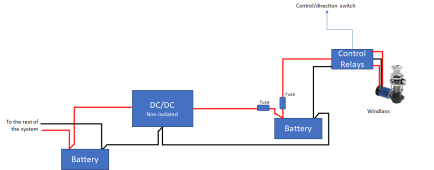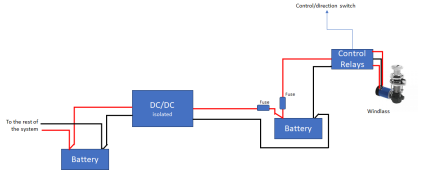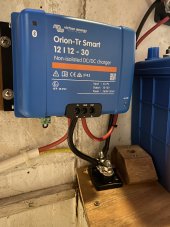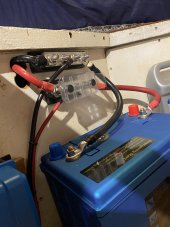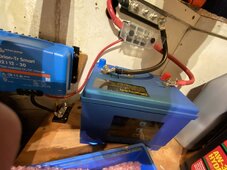Off-Grid Sailboat
New Member
- Joined
- Apr 10, 2020
- Messages
- 32
I've got a LifePO4 Windlass Battery that is totally separate (isolated) from the house LifePO4 bank. I use a DC/DC charger from main panel (house bank) to windlass battery. I originally installed a non-isolated Victron Orion DC/DC charger but was having problems popping the breaker at the panel because I was tying input ground to windlass battery ground. Fixed that and took out ground from DC/DC charger to windlass battery and now not getting charge to windlass battery. It reads 9.2V while the DC/DC charger is reading 13.2V input and 14.2V output. I think because there's no ground to complete the circuit back to charger? I've had different people tell me different things. One says "isolation has nothing to do with grounding issue" and another says, you need pos/neg input and pos/neg output from DC/DC charger to windlass battery. Probably difficult without pictures or schematics but thought I'd throw it out there for a better understanding of what I've got going on here. I tend to agree with the latter, that a complete, isolated circuit is necessary if you don't have a common ground for the whole system.




